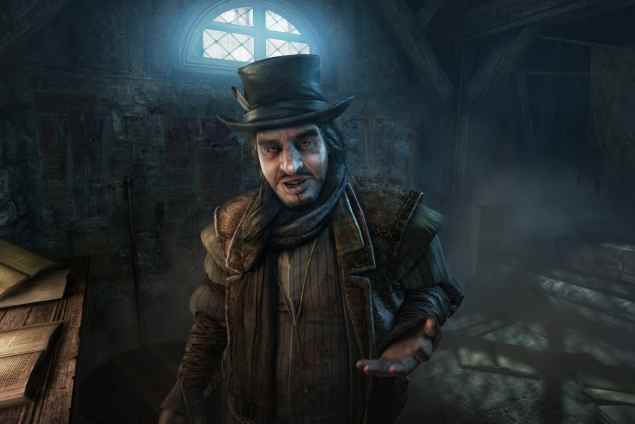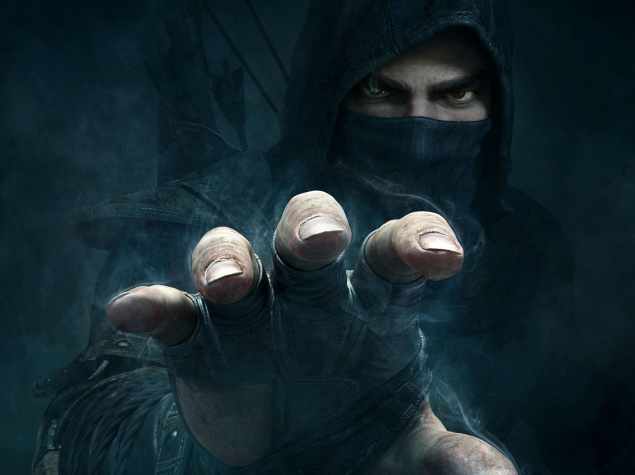People have been waiting for the new installment in the Thief franchise for ten years now. That's a long time to wait for a game, and the odds were that fans would be disappointed. After Thief: The Dark Project in 1998 and then Thief 2: The Metal Age in 2000 both launched on PC, Thief: Deadly Shadows came to consoles in 2004. While Thief (2014) isn't as bad as Duke Nukem Forever, it's not quite XCOM: Enemy Unknown either.
Thief is famous for having formalized the tropes of the genre, but in the ten years that have passed, stealth games have evolved a lot. At times the controls and gameplay of the new Thief feel clunky and outdated. Despite this, when Thief feels like its classic origins, it's at its best. Get stuck with the overly scripted sequences and the - thankfully occasional - action sequences, and things start to come unstuck. Stealth games are, at their heart, living puzzles, and the appeal lies in finding out how to solve them. Thief (2014) often leads you by the nose, giving you just one correct way to solve a room.
But the biggest problems with the new Thief were technical - we were reviewing the game with a PS3 copy with the latest game updates, and the game felt like a mess. There's a cutscene almost immediately after a basic tutorial sequence, and the audio stutters and loses sync right away. This was an intermittent problem throughout the game, and it wasn't just cutscenes which were affected. There are occasions in the game itself where things slowed down noticeably, and this is a problem which is being reported even with the next-gen versions of the game.

At other times, the audio and video and subtitles all synced perfectly, and at those times you can recognize how needlessly convoluted the storyline is. Thief feels best when our protagonist, the Master Thief Garrett, is sneaking around and picking up everything that isn't nailed down. If the game was about nothing more than a series of heists, it would be perfectly enjoyable. Adding in a clichéd myth arc which could be at home in the Legacy of Kain series is a needless complication. Making things worse is the fact that these major story missions are also usually some of the most heavily scripted, making it nearly impossible to experiment and find your way through the missions.
Thief games play out in the first person, and this one is no exception. It feels well executed, you can take cover and peek, and it forces you to actually focus on the guards and watch them, instead of just keeping them in your peripheral vision while studying the map.
"Pure" sneaking
Thief's world feels like a Dickensian dystopia - at the very beginning, you're trying to steal something called the Primal Stone from Baron Northcrest and you witness a cabal of hooded men trying to perform some occult ceremony. This quickly spirals out of control and in the accident that follows, you're knocked out for one year.
Next, you're being sneaked back into the city and it's under lockdown. Northcrest's guards enforce their curfews with cartoonish villainy, while cheerful fences and an all-knowing Queen of the Beggars form the backdrop against which you're going to break into shops and steal jewelry, sneak around great houses and dodge crews of guards.
You've got your wits, an arsenal of gadgets such as water arrows, fire arrows, "the claw" (which lets you climb up to hard to reach areas, and a power called "focus" which can show you guard's footsteps, highlight points of interest and places you can hide or climb, and also, loot you want to grab.

Focus doesn't automatically recharge, but you can find or buy poppies; eating them recharges focus, but they're relatively expensive, and you're going to want to spend money to upgrade the ability, making it last longer and increasing the total amount of focus you have available.
The game is divided into a hub - the City - and the various mission areas. Getting around the city is actually pretty enjoyable as you work out the different paths you can take to move without being noticed. The different shops and quest-givers are scattered around the hub, and getting around and finding things to steal along the way is one of the most enjoyable parts of Thief.
Movement is fairly smooth - leaning against railings lets you look over the side, and you can take cover at the tap of a button, to lean around corners and watch the movements of guards from the shadows. The interplay of light and shadow has always been an important part in the series, and Thief (2014) is no exception.
And while most new games are more forgiving, Thief takes the stealth tropes seriously, and makes it clear that you don't want to get spotted. You can defend yourself reasonably well against one opponent. Two and you're in trouble. Garrett isn't an action hero - falling carelessly can seriously damage you, and you want to hide from guards, not fight them.
One interesting power is the "swoop" action - a short dash which can be used to quickly move from one hiding place to another. The swoop feels smooth and powerful, letting you glide sneakily across the maps. It's a superb movement, and you'll find yourself swooping up stairs and across wide open alleys simply because you can.
Too many constraints
As you play through the game, you're going to pick up just about everything that isn't nailed down. At the Thief difficulty level (the second, out of four, not counting the custom difficulty level), the game is fairly generous with loot and the guards are relatively smart, noticing things like a safe left unlocked, but they're not too difficult to work around either.
Takedowns aren't difficult if you plan them well, and getting around the maps feels largely smooth. The controls can be a little rough at times though - there were times where crossing a plank across a street led to a bone cracking fall in the middle of a small troop of guards because you looked off to one side for just a second.
The real appeal of the early Thief games though was the open-ended nature of the gameplay. Avoidance is critical of course; you don't get to choose between robbing someone quietly, or killing everyone and then walking off with the loot.

But you were able to pick from different points of entry, working out routes to take on a building, disarming traps and coming up with unconventional solutions to solve problems. In Thief (2014), this is often not the case. The story missions are tightly scripted, and to get you in the right place, you're funneled through tight corridors where you need to play in exactly the way the designers expected, or fail repeatedly.
The rope arrows and the fire arrows are an example of this - there are only a few places where you can use these tools. It's a nice toy that's been given to you, but the floor telegraphs their intentions to make sure that you know what to do. When you're not the one coming up with uses for these tools, it feels no different from having a flashing button pop up and say, "press X to continue". It's a pointless abstraction.
The verdict
The best thing that you can say about Thief (2014) is that it has a strong identity which it keeps true to. The design of the hub city area isn't going to be mistaken for any other game. Even as the story evolves and you get caught up in the occult elements, the tone remains consistent and the feel of Thief feels enjoyable.
Despite the various issues such as the wasted tools and the often constrained design, Thief remains an enjoyable experience. There are parts of the game where everything comes together well. Situations where you will be able to plan your approach with patience, where you will feel masterful as you make your way through the map, disarming traps and finding sneaky hiding places.
At the end of the day though, if you're an old fan of the series, you're going to feel let down by how constrained this version feels, while newcomers will be put off by the many bugs and the unforgiving gameplay which doesn't give you enough freedom to figure things out for yourself.
Price: Rs. 990 (PC), Rs. 2,999 (Xbox 360 and PS3), Rs. 3,499 (PS4)



























 .
.